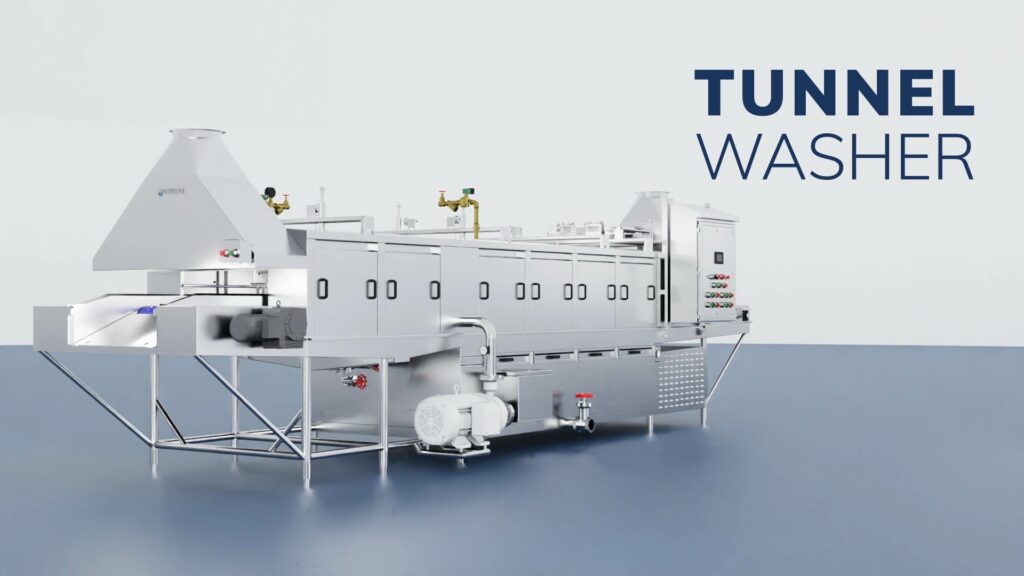Tunnel washers are large conveyorized sanitizing systems with an incredible throughput. They’re popular for operations with a large volume of process items to be cleaned as quickly and effectively as possible. Their design consists of a long conveyor belt, which pulls wash items through a tunnel made of different cleaning modules.
The tunnel washers are unique among Douglas Machines Corp. washers in that they’re modular, meaning clients pick and choose which elements they want in their machine to create the perfect tunnel washer for their business. Still, there are two basic designs of tunnel washers.
Tunnel Washer Modules
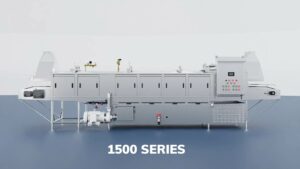
The first design is the compact 1500 series, which consists of:
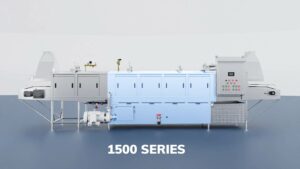
- A recirculating detergent wash.
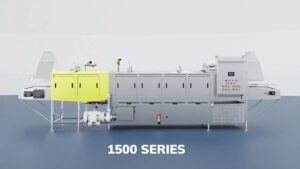
- A sanitizing rinse.
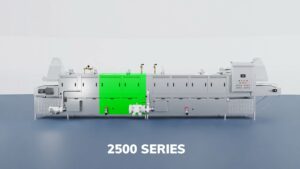
The second standard design is the larger 2500 series, which adds a recirculating rinse section. This model reduces the water used by each wash cycle by 66%, making it a helpful addition where resource conservation is a concern.
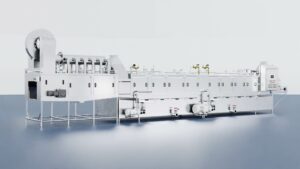
If your facility’s process requires instant drying, then you can add a high-pressure blow-off module to either of these designs.
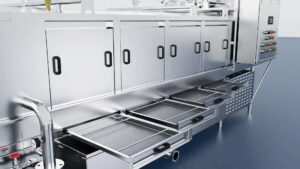
Inside the Tunnel Washer
Every Douglas Machines Corp. tunnel washer contains filter baskets to catch debris from the process items. This prevents nozzle clogging, simplifying maintenance and reducing downtime. Pull-out panels provide easy access to remove and rinse the filter baskets.
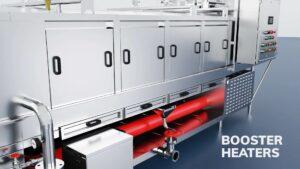
Each wash uses booster heaters to maintain operating temperature and ensure water is at a sanitizing heat. These booster heaters can be electric, gas, or steam, depending on what your facility has available.
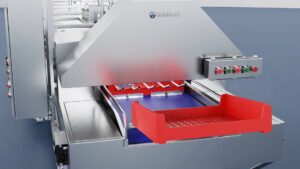
The stainless-steel conveyor belt or chain carry the process items, while a hold-down mechanism keeps them in place during washing. There are two types of hold-down mechanisms: fixed and adjustable. If your facility has only a single type of item to clean, you’d prefer a fixed hold-down mechanism. Your machine would use an adjustable mechanism if your business has a variety of different sized items to clean.
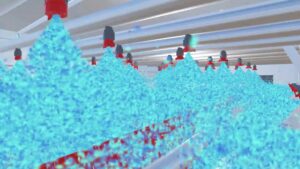
Process items first enter the recirculating wash where high-velocity v-jets remove even the toughest soils. They then enter the freshwater sanitizing rinse, and, if applicable, the recirculating rinse.
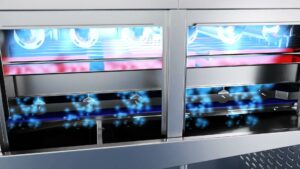
If equipped, process items complete their wash cycle with a high-pressure blow off module to remove the residual water.
These are just the standard models. Douglas Machines Corp. DougMac engineers can customize the conveyorized tunnel washers to suit a wide array of processing items, soil types and amounts, and throughput requirements. This way, the machine can keep your process streamlined while saving you money. Designed and constructed with efficiency in mind, these automated sanitizing systems also offer huge savings on labor, time, and resources. If you’re interested in learning more, you can contact us today.

